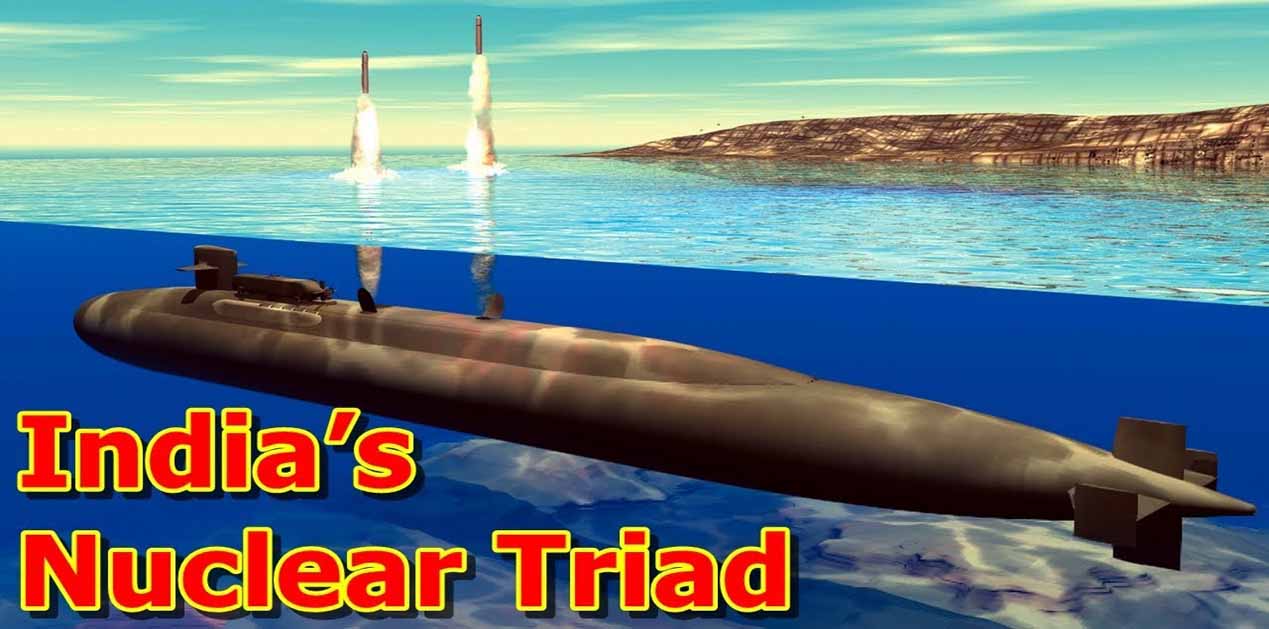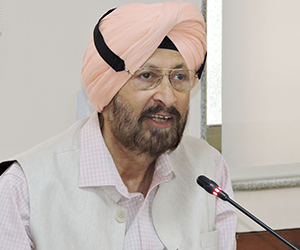With a sense of pride, Prime Minister Narendra Modi announced in early-November 2018 that INS Arihant, India’s indigenously designed and built nuclear-powered submarine, ship sub-surface ballistic nuclear (SSBN), armed with nuclear-tipped submarine launched ballistic missiles (SLBM), had successfully completed its first ‘deterrence patrol’ or operational mission.
For a nation that follows a ‘no first use’ nuclear doctrine, genuine deterrence can be provided only by an efficient nuclear force that can survive a first strike. Such a capability is provided only by SSBNs armed with nuclear-tipped SLBMs. Hence, it was imperative for India to endeavour to operationalise its SSBNs as early as possible. The PM’s statement was a clear signal to India’s nuclear-armed adversaries that the country’s nuclear triad – the capability to launch nuclear weapons from land, sea and air – is now firmly in place even though the present sea-based capability is modest.
Requirement of SSBNs
Just as air bases are susceptible to damage in a disarming first strike, India’s strategic delivery aircraft are vulnerable to in-flight interception by the enemy’s air defences. Also, a large proportion of the land-based ballistic missiles may be destroyed before they can be launched. SSBNs are difficult to detect and track even with state-of-the-art intelligence, surveillance and reconnaissance (ISR) means. They are relatively less vulnerable to a ‘zero warning’ surprise attack.
SSBNs also have their limitations, including the technological complexity of achieving the desired missile launch accuracy from a mobile platform whose geographical position (and depth) are not known with as much accuracy as that of a fixed silo. It is also difficult to communicate targeting information and executive orders to them once they are submerged. Indian SSBNs should be capable of operating from patrolling bases in the Indian as well as the Pacific Ocean and should be equipped to spend at least thirty to forty days continuously at sea.
Bharat Karnad of the Centre for Policy Research of the view that five SSBNs are required for India’s nuclear force, each with twelve SLBMs. Rear Admiral Raja Menon recommends a force of six SSBNs (with two ‘on station’ at all times), each equipped with twelve SLBMs. Six SSBNs would obviously be preferable to four or five as they would provide greater redundancy and flexibility. However, the difference in capital costs would be considerable. Indications are that India is eventually likely to deploy a total of five SSBNs. These should meet India’s requirements of credible minimum deterrence well into the first few decades of the twenty-first century.
India has been working on building nuclear-powered submarines for several decades. The Advanced Technology Vehicle (ATV) programme to construct such vessels began in the mid-1980s. Parallel to the ATV programme, the Indian Navy gained invaluable experience from operating INS Chakra-I, a Charlie-I class nuclear-powered submarine (K-43) leased from the Soviet Union over the period 1988–91. The second such submarine that entered service was the INS Chakra-II, an 8,000-ton Akula-II class hunter-killer submarine. It was inducted on a ten-year lease from Russia in April 2012. These submarines provided a good training platform for the SSBN fleet. The leasing of another Russian submarine is being negotiated.
Built at the Ship Building Centre, Visakhapatnam and launched in 2009, India’s first SSBN, the 6,000-ton INS Arihant (codenamed S-2) is powered by an 84 MW nuclear reactor that attained criticality in August 2013. The Arihant underwent sea trials for several years, was inducted into service in August 2016 and has now been declared fully operational after successfully completing its first deterrence patrol on November 4, 2018. INS Arighat (S-3) was launched in November 2017 and is undergoing sea trials. Two other Arihant-class SSBNs are known to be under construction. The S-4 and S-4* are still some years away from launch. These will displace approximately 7,000 tons and carry eight SLBMs each. Future SSBNs (S-5) will be in the 10,000-12,000 ton class with a 190 MW reactor and will carry twelve SLBMs each with range in excess of 5,000 km.
In addition to SSBNs, SSNs (nuclear-powered attack submarines) armed with conventional missiles are also under development. Compared with diesel-electric submarines, SSNs sail faster, dive deeper and can stay on patrol stations for much longer durations. The construction of six SSNs is reported to be part of the ongoing 30-year indigenous submarine building plan. Admiral Sunil Lanba, the Chief of Naval Staff, said in a recent interview that the Chinese have added 80 warships and submarines to the fleet of the PLA Navy in the last four to five years. Chinese submarines on patrol duty in the Indian Ocean Region have been sighted in eight out of the last ten years. Developing the ability to reciprocate would certainly add to deterrence.
SLBMs in the Arsenal
The first SLBM developed for India’s SSBN fleet is BO-5/ K-15, a 750 km-range missile. INS Arihant is armed with 12 K-15 missiles. After gaining experience on soft ejection (cold launch) underwater followed by ignition of the missile motor with the K-15, DRDO scientists began developing the K-4 SLBM. This is expected to have a maximum range of 2,000 km to 3,500 km and is reported to be currently undergoing technical trials. At its maximum range, the K-4 would reach most high-value targets in Pakistan from a stand-off distance in the Bay of Bengal, providing planners with additional options for targeting. However, it will not reach some high-value targets on the Chinese mainland from the Bay of Bengal.
INS Arighat and S-4 are likely to be equipped with the K-4 SLBM. In order for India to threaten all possible high-value targets in China with the K-4, SSBNs would have to patrol closer to the Chinese coastline. As this is not desirable, India will inevitably have to develop an SLBM with a range of 5,000 km. The K-5 and K-6 SLBMs, with maximum range greater than 5,000 km, are reported to be under development. Till these SSBNs enter into service, India’s deterrence capability against the Chinese will remain modest.
(The writer is former Director, Centre for Land Warfare Studies (CLAWS), New Delhi)
(The paper is the author’s individual scholastic articulation. The author certifies that the article/paper is original in content, unpublished and it has not been submitted for publication/web upload elsewhere, and that the facts and figures quoted are duly referenced, as needed, and are believed to be correct). (The paper does not necessarily represent the organisational stance... More >>
Image Source: https://i.ytimg.com/vi/XXCUjVS0DY4/maxresdefault.jpg










Post new comment